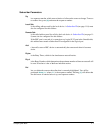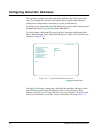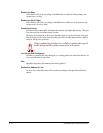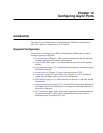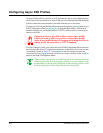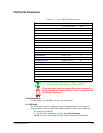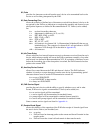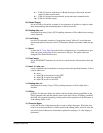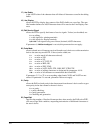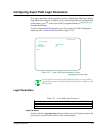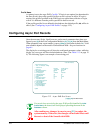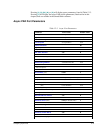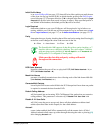
Configuring Async Ports 12-5
4
= PAD will send an indication of a Break message to the remote end and
remain in data transfer mode.
8
= PAD will escape from data transfer mode and enter command mode.
16
= PAD will discard output.
08, Discard Output
allows a PAD to discard the contents of user sequences in packets on request, rather
than disassembling and transmitting these to the user's device.
09, Padding After <cr>
determines how many (if any) NULL padding characters will be added after a carriage
return character.
10, Line Folding
provides for automatic insertion of appropriate format "effectors" in the character
stream transmitted to the user's device. The number indicates maximum characters per
line.
11, Speed
is either the X.3 Line Speed specified in Port configuration or, if autobaud was spec-
ified, the speed of the async device connected to the port. The speed cannot be
changed in the PAD Profile record.
12, Flow Control
allows XON/XOFF from the user's device to control the rate of data transfer from the
PAD.
13, Insert <lf> after <cr>
causes a linefeed to be inserted after a carriage return in the specified instances. Values
(can be added) are:
0
= none.
1
= after CR in transmission to the DTE.
2
= after CR in return from the DTE.
4
= after CR in echo to the DTE.
14, Padding after <lf>
determines how many (if any) NULL padding characters will be added after a
linefeed.
15, Editin g
provides for character delete, line delete, and line display editing capabilities in the
PAD command state and data transfer state for the user's device. If editing is enabled,
the PAD will suspend forwarding of data packets after expiration of the idle timer or
if the editing buffer is full.
16, Character Delete
is the ASCII value of the character that is used to delete characters. When this char-
acter is received by the PAD, it will be stored in the editing buffer, and will cause the
previously stored character to be deleted at packet forwarding or if a line display is
performed.



